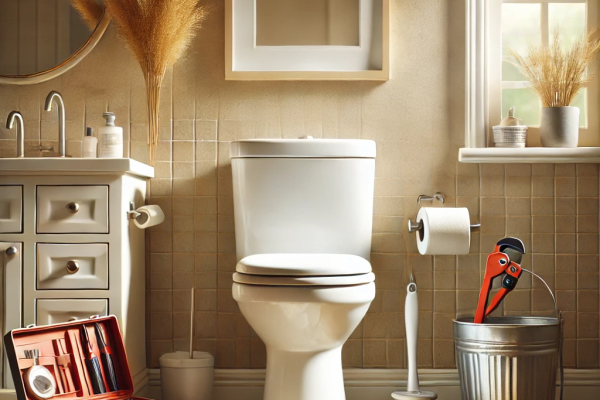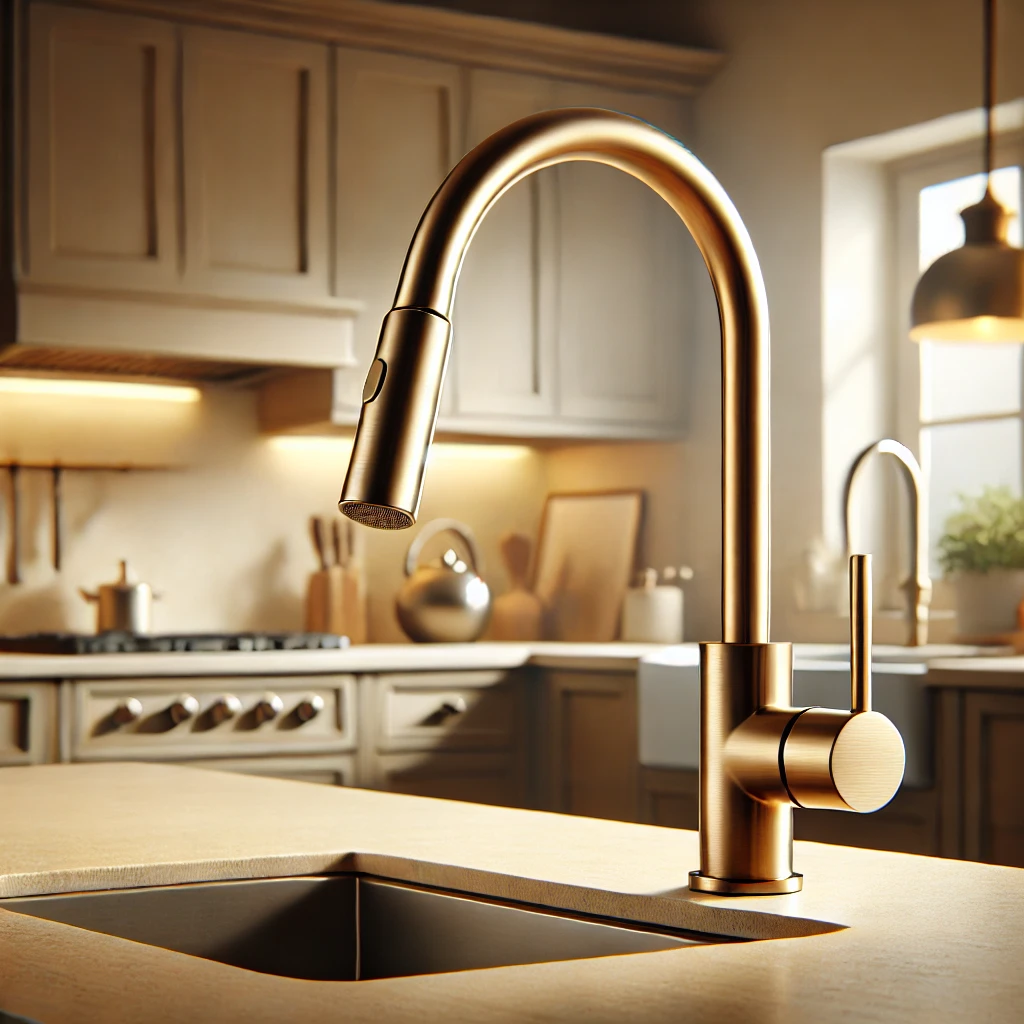
How Not to Drown in Toilet Troubles: 10 Tips from a Texas Plumber
Introduction
It’s hard to overestimate the importance of a properly functioning toilet in our daily lives. We use it every day and usually don’t think much about how it works. But if the toilet clogs, starts leaking, or begins to make strange noises, we suddenly have questions: “How do I fix it?”, “Why is this happening?”, “Should I just call a plumber?”
1. Make Friends With the Toilet Brush: A Quick Clean After Every Use
It may sound too simple, but trust me: a quick, five-minute cleanup after every “major” use of the toilet significantly reduces the risk of buildup and limescale. Don’t wait until dark streaks or stains appear in the bowl. Regular cleaning washes away bacterial film and prevents mineral deposits from forming on the porcelain, which could damage the glaze.
In Texas, where water is often quite hard, mineral deposits can build up much faster than in areas with softer water. So if you live in a place like that, don’t ignore the extra bit of cleaning. It may feel like you’re spending extra time, but it’s far better than running around stores a month from now in search of expensive cleaning solutions or calling a plumber for emergency help.
2. Don’t Turn Your Toilet into a Trash Can
One of the most common causes of clogs is the habit of flushing anything and everything: wipes, paper towels, cosmetic pads, cotton swabs, and plenty of other items. Your toilet is designed for only two types of waste—we all know which. Everything else can either get caught in the pipes and restrict water flow or, worse, create a serious clog.
This issue is especially common in Texas, where air conditioning often makes indoor air very dry. People use moist facial or body wipes frequently and then, without giving it a second thought, flush them down the toilet. Even if the package says “biodegradable,” in practice, these wipes break down very slowly and almost always cause blockages.
Pro Tip: Place a small wastebasket next to the toilet, and stick a sign on the toilet lid that says, “No wipes or personal hygiene items inside!” These straightforward reminders can save you a lot of time and money on repairs.
3. Use a "Courtesy Flush"
There’s a concept in the English-speaking world known as “the courtesy flush.” It means not to let a large amount of waste accumulate all at once. If you need to use a lot of toilet paper or sense that the water might not be enough for a proper flush, perform an intermediate flush. That way, you won’t overload the toilet and reduce the risk of clogs.
In the dry and hot Texas climate, this habit is especially important. People often drink plenty of water or use additional hygiene products, which increases the load on the sewer system. Intermittent flushing helps you avoid awkward situations where the water suddenly rises to the bowl’s rim and threatens to overflow onto the floor.
4. Keep a Plunger and a "Snake" Handy
A simple plunger is your first line of defense against an emerging clog. But sometimes, a plunger alone isn’t enough. That’s why it’s smart to also keep a plumber’s snake at home (sometimes called a drain auger). With this device, you can carefully unclog the pipe a few feet down.
This tip is particularly relevant for those who live in Texas homes with septic systems or where water pressure fluctuates. Sometimes the pressure surges; sometimes it plummets, and the system can become blocked without warning. Having a snake and a plunger in your household is like having a first-aid kit. They’re easy to use, but if you sense that the clog is serious and you can’t manage, don’t hesitate—call a professional.
5. Don’t Ignore Small Leaks
A dripping tank, barely noticeable droplets on the floor near the toilet—these are early signs of bigger trouble. Some people go years thinking, “Well, it’s only dripping a little bit; I’ll fix it later.” Then one day, they discover a flooded bathroom and a torn hose connector.
It’s especially frustrating to deal with this during a scorching Texas summer when water is already precious, and the meter seems to spin like crazy. Plus, leaks can damage your flooring: wood starts to rot, laminate swells, and tile can crack due to constant moisture. A minor issue can quickly escalate into a major renovation project.
What to Do:
- Check all connections, nuts, and gaskets.
- Tighten any loose bolts.
- Replace cracked hose connectors immediately.
- Check the toilet’s floor bolts to ensure they’re secure.
6. Replace the Fill Valve in Time
The fill valve regulates the flow of water into the tank. It wears out over time and may fail to shut off, causing water to continuously spill into the overflow tube. Like the flapper, fill valves are sold in practically any hardware store and aren’t difficult to install.
Don’t wait for constant noise or overflowing—check the valve when you notice the toilet tank getting louder or taking too long to fill. In Texas, a broken fill valve can cause a significant hike in your water bill.
7. Adjust the Water Level in the Tank
If the water in your tank is set too high, there’s a risk of overflow and endless waste of precious water. On the other hand, if the water level is too low, the flush may be weak, forcing you to press the handle multiple times. The correct level is usually marked by the manufacturer inside the tank.
Carefully adjust the float or valve so that the water stops at the specified height. In Texas, minerals can accumulate on the float, interfering with its operation. Keep it clean for stable performance.
8. Keep an Eye on the Flexible Supply Line
In many homes, the water supply to the toilet tank is connected via a flexible hose with a metal braid. Over time, it can rust, crack, or deform—especially if the water is hard. In Texas, where the quality of tap water varies, this process happens faster. Tiny leaks or, worse, sudden breaks can occur.
Check the flexible supply line at least twice a year. If you see signs of corrosion or bulging, replace it immediately.
9. Keep an Eye on the Flapper
The flapper is a small rubber part inside the tank that closes off the drain hole leading into the toilet bowl. Over time, it wears out, loses its seal, and starts letting water through. The result? Your tank constantly leaks water into the bowl, leading to a sky-high water bill.
To check for leaks:
- Remove the tank lid and observe if water seeps into the bowl.
- Add food coloring to the tank water; if the bowl’s water becomes colored, the flapper is leaking.
In Texas, hard water can wear out flappers faster, so check them regularly.
10. Inspect the Tank Mechanisms Every Six Months
Besides the flapper and fill valve, other parts inside the tank—pins, levers, gaskets, overflow tubes—can wear out. Preventive maintenance is key. At least every six months, remove the tank lid and inspect for rust, warping, or cracks. Replacing worn parts early is far cheaper than dealing with major breakdowns.
In older Texas homes, limescale can build up inside the tank. Use products that can be added to tank water to clean the mechanisms and extend their lifespan.
Conclusion: A Little Effort for Many Years of Service
As you can see, you don’t need to be a certified engineer or spend hours at a workshop to avoid most toilet troubles. The basic principle is regular care and an attentive eye for details. Don’t wait until a clog “blossoms” or a tiny crack in the supply line turns into a geyser. A quick brush cleaning, timely flapper replacement, proper water-level adjustment, and a polite flush—these are the fundamental tips that will keep your toilet running smoothly for years without unpleasant surprises.
If you run into a serious problem and feel like the situation is getting out of hand, don’t hesitate to contact a professional plumber. This is especially important in Texas, where the local climate and water supply specifics can speed up wear on plumbing fixtures. Small investments in preventive measures cost much less than sudden large expenses for major repairs or replacements.
Take care of your home, your time, and your nerves—and let the bathroom remain a place where nothing reminds you that even the best systems can have their glitches.






